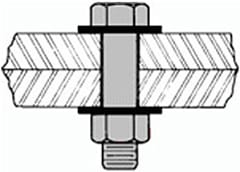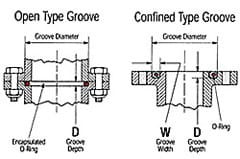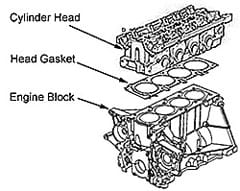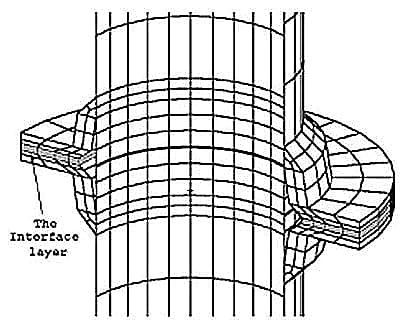A Bolted Joint Interface can be defined as the plane formed by the contacting surfaces of parts being conjoined and clamped by a threaded bolt or by a bolt and nut assembly. In its simplest form, a bolted joint interface is the plane formed by two, flat-metal bars clamped together. A more complex interface is formed by a pipe flange containing a gasket or an o-ring seal. A very complex series of interfaces are found in an automobile engine block. These bolted joint interfaces are illustrated in Figures 1–3.
 |  |  |
| Fig 1: Simple Bolted Joint | Fig 2: Pipe Flange with O-ring | Fig 3: Engine Block Exploded View |
There are many factors that affect the integrity of a joint’s interface. These include:
- Bolt preload torque and the number and arrangement of the bolts;
- Flange or part thicknesses, materials of construction, and surface roughness;
- Surface details including o-ring grooves, cooling or heating holes, and internal chambers such as those for pistons in an engine block;
- Vibration;
- Temperature;
- Transverse or axial forces acting on the bolts;
- Internal hydrostatic or pneumatic pressure
The physics of bolted joint interfaces has been extensively modeled by engineers and researchers. The defining equations are quite complex and require finite element models for their solutions. Figure 4 shows the finite elements around the interface layer of a pipe flange.

Fig 4: Interface Layer and Finite Elements for a Pipe Flange
Such models are verified by measuring the actual forces at the interface surfaces of joints. This can be done using strain gauges and load cells, but this is expensive and time consuming. An alternative method is the use of Fujifilm Prescale® pressure indicating film.
Simply place Fujifilm Prescale® pressure indicating sensor film between any two surfaces that touch, mate or impact. Apply pressure, remove it and immediately the film reveals the pressure distribution profile that occurred between the two surfaces.
For bolted joints where there is movement, the Tactilus® force indicating washer reveals precisely how much force (tensile load) is being applied at the interface of the bolt and flange surface, and how this force is circumferentially distributed.

